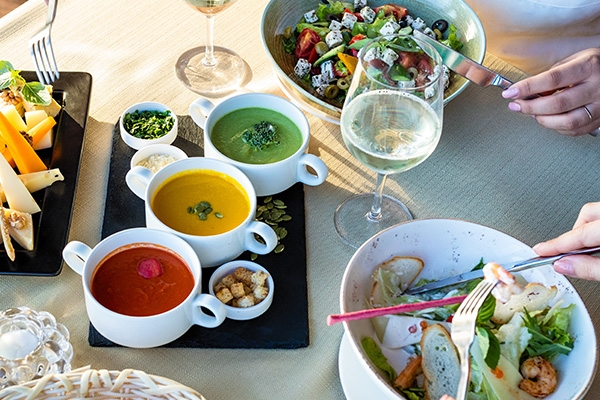
|
The Rise of Chaos Cooking
January 13, 2023

Fusion cuisine has been around for decades. When most foodies and restaurant owners think of fusion cooking, they think of a refined mash-up of global cuisines that blend world flavors with a nod towards authenticity. However, a type of fusion food is taking social media and restaurant menus by storm: chaos cooking.
What is Chaos Cooking?
What makes chaos cooking stand out and differ from other concepts of fusion foods? First, chaos cuisine can trace its birth to social media platforms like TikTok. Tatler points out that the rise in social media and short-form videos allowed users to experiment with unexpected food combinations and share them with audiences worldwide. Fusion cuisine (as a culinary movement) was the brainchild of French chefs in the 1970s, who blended French flavors and techniques with Asian ingredients.
Second, chaos cooking, as the name suggests, throws rulebooks out of the window. Where fusion cooking has elements of sticking to more authentic flavor profiles, chaos cooking enjoys a no holds barred approach. It borrows from global cuisine and sometimes from kitschy meals, mixing them in imaginative ways.
At the heart of chaos cuisine is an extreme combination of world flavors that can also draw on elements of nostalgic and accessible dishes. However, it takes the fusion concept to a new level, and it’s already making its way onto well-established restaurants’ menus. While it may have started on social media, it’s undeniable that chaos cooking is rising in the culinary world.

The Impact of Fusion Food and Chaos Cooking on Menus
Like all new culinary explorations, not everyone is on board with chaos cooking. Some might find the concept gimmicky or not refined enough. However, a growing number of people relish the freedom it provides. Do you want to make ravioli with cheeseburger filling? Turn a Rueben sandwich into an eggroll? Thinking about tandoori chicken on poutine? Chaos cooking gives you the “thumbs up”.
One reason chaos cooking is a big trend is its association with flavor tourism, which the National Restaurant Association predicts will be big in 2023. Flavor tourism is the concept of “traveling the world” via global-inspired dishes, and chaos cooking has that in spades. However, aside from global-flavor profiles, it also opens up a wide range of menu possibilities for any restaurant.
Does Your Menu Need a Dose of Fusion Cuisine?
No matter how you feel about chaos cooking, one thing is certain: it expands concepts of what food can be. It can also help infuse some exciting elements into menus, which could be lucrative. Today’s customers are interested in unique flavor combinations and want an experience while dining. Tatler points out that newer generations are especially receptive to global flavors. With Generation Z making up 40 percent of the consumer population and purchasing power, capturing their attention can mean big business for restaurants.
To gain some attention on your menus and potentially bring in new customers, think about ways to play around with the concept of fusion cuisine—as big or as small as you want. The key to adding elements of chaos cooking to your menu is intention. When chaos cuisine works best, it lets culinary genres fuse together harmoniously.

Find Your New Favorite Ingredients at US Foods CHEF’STORE
At CHEF’STORE, we stock a wide variety of products that will inspire your next menu. Whether you are searching for unique spices, premium meats, fresh produce, dried goods, or bakery staples, you’ll find all that and more lining our shelves. Plus, at competitive prices, you can get exceptional ingredients for less.
Stop by one of our many locations or take advantage of our third-party delivery services to take advantage of great items and great prices.